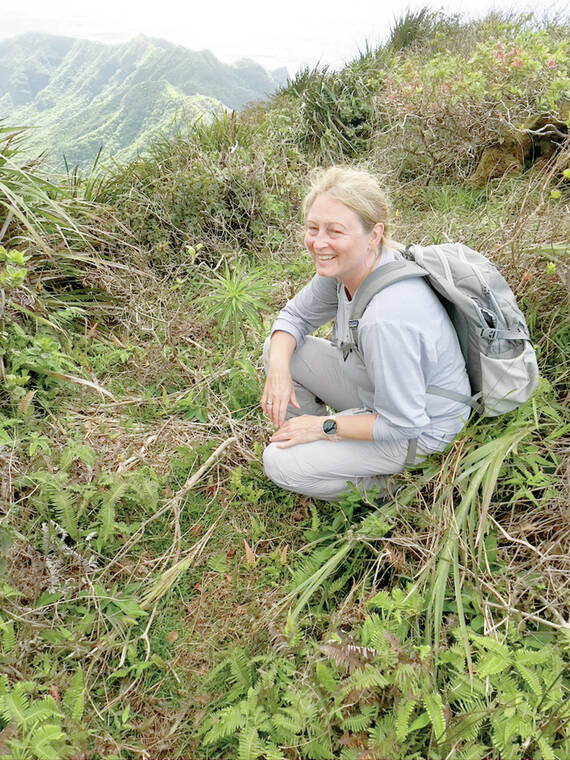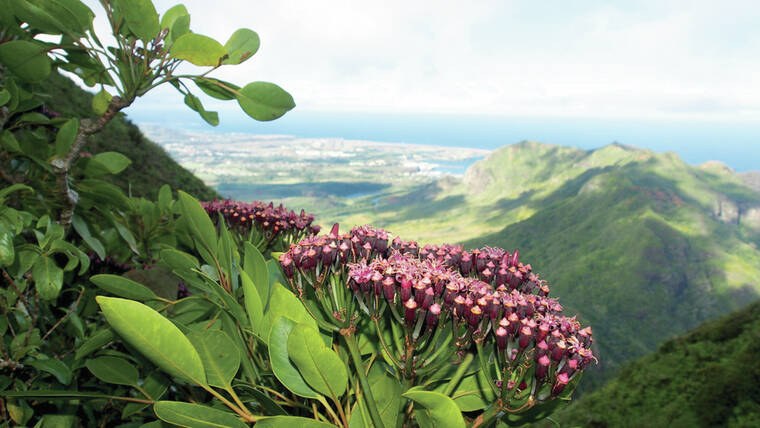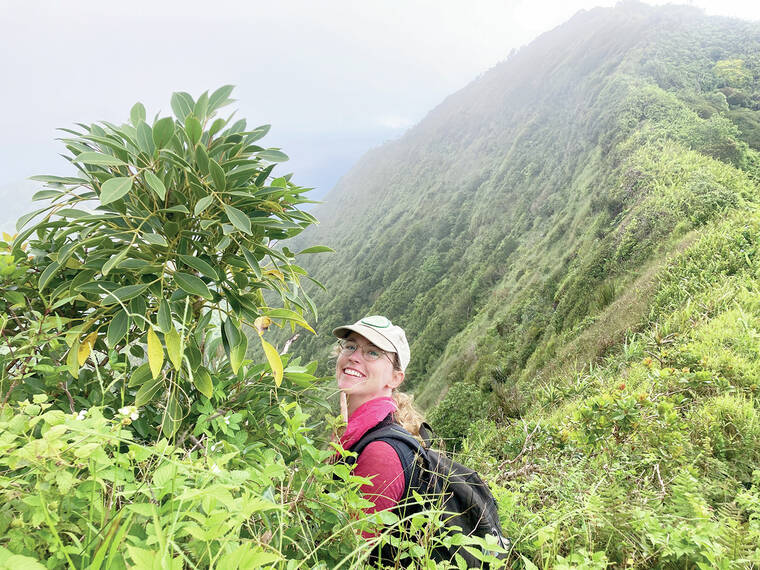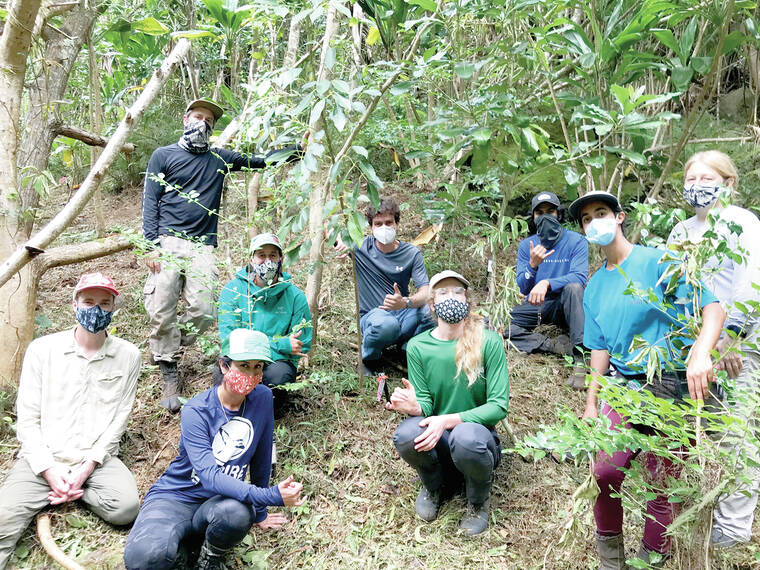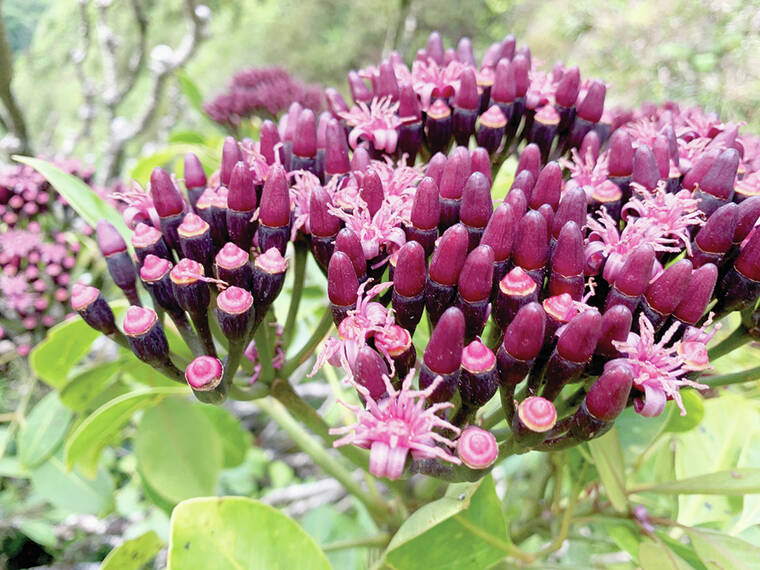KALAHEO — A years-long project that may save an endangered Kaua‘i plant from extinction is about to take its next step, when recently collected DNA samples are sent to China for analysis.
Polyscias bisattenuata, a member of the ginseng family Araliaceae, is endemic to Kaua‘i. Few specimens occur in the wild, but in 2017 National Tropical Botanical Garden staff and volunteers planted 4,000 new P. bisattenuata trees across 10 sites on the island.
A months-long, multi-agency field campaign, completed this January, revealed about 10% of the trees planted in 2017 have survived.
That’s a pretty good survival rate, according to Dr. Nina Rønsted, NTBG director of science and conservation.
“This is one of the plants where we really have a chance to make a difference,” Rønsted said in a recent interview.
The P. bisattenuata project is funded by a U.S. Fish and Wildlife Service science support grant.
Project collaborators include NTBG, USFWS, the U.S. Geological Survey, the state’s Plant Extinction Prevention Program and private landowners. Julia Douglas, a graduate student assistant from the University of Hawai‘i at Manoa, helmed the recent field campaign.
PEPP, Rønsted said, prioritizes plant species with less than 50 individuals in the wild.
“There’s more than 250 plants in Hawai‘i at that status, which is a lot,” she said.
The state’s outsize number of critically-endangered plants helps explain the great interest in preserving P. bisattenuata, which has been reported as ‘ohe ‘ohe and ‘ohe mauka in Hawaiian.
“You can say, ‘Well, is it really that important to keep it, because it might not survive anyway?’” Rønsted said. “But the problem is, when you have so many of them, you’re suddenly talking about half the flora. You cannot just say, ‘Well, we don’t care about half the flora (in Hawai‘i).’”
The result, according to the science and conservation director, is “a little bit of a race against time” to preserve the “really, really unique plants” of Kaua‘i and other Hawaiian Islands.
China-based science company BGI’s Hong Kong laboratory will conduct genomic sequencing using the DNA samples (green leaf pieces) collected during the 2021-22 field campaign.
The resulting information will help inform future restoration initiatives for P. bisattenuata and other Hawaiian rarities.
“If we find out, ‘Well, the genetics really don’t seem to matter. It’s all about where we plant them out,’ that can save us a lot of time thinking about what we’re planting where, and just trying to get it out there,” Rønsted explained. “Or if it says, ‘Well, this actually seems to matter a lot,’ then maybe we do need to make these kinds of population studies, so that we understand the genetics.”
The BGI laboratory’s results won’t come in until sometime later this year.
In the meantime, hundreds of P. bisattenuata trees will continue to grow in North Shore, Eastside and South Shore forests.
Many have already reached six feet in height. Eventually, they will burst into bloom and bear fruit.
“I can almost imagine this kind of pink cloud on some of the mountains that you could almost see from a helicopter,” Rønsted chuckled.
•••
Scott Yunker, reporter, can be reached at 245-0437 or syunker@thegardenisland.com.
